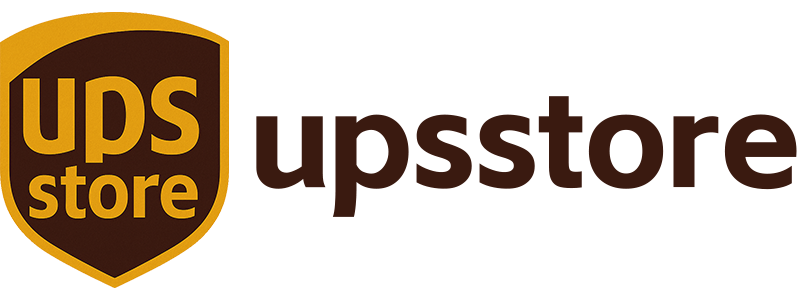The packaging printing industry is at an inflection point. E‑commerce and local retail are rewriting demand curves, sustainability criteria keep tightening, and digital workflows are no longer niche. On the ground, teams at upsstore hear daily from small businesses and neighbors who want sturdy corrugated boxes today and clean, readable labels tonight. That granular reality mirrors national trends: shorter runs, more SKUs, and practical, recyclable materials that don’t feel wasteful.
Across North America, packaging print is edging toward digital for agility, while corrugated stays resilient thanks to the incessant flow of shipping and moving. Analysts peg digital’s share of packaging print in the region at roughly 20–35%, depending on segment, with corrugated boxes showing a steady 2–4% annual demand lift. The context matters: the moving season and promotional cycles can swing local volumes by 15–25%, and any forecast is only as good as the assumptions behind it.
From a designer’s lens, the story isn’t just numbers. It’s how substrates (Corrugated Board, Kraft Paper, CCNB) carry brand clarity and how InkSystems (Water-based Ink, UV Ink, UV-LED Ink) balance color fidelity with recyclability. Decisions live in trade‑offs: speed vs. finish, ΔE color targets vs. texture, and a box that survives the move without feeling excessive.
Market Size and Growth Projections
In North America, corrugated and folding carton continue to be the backbone of physical commerce. Most forecasts land corrugated packaging growth at around 2–4% CAGR over the next few years—a modest but stable trajectory driven by e‑commerce, local retail logistics, and the perennial churn of moving households. Label and flexible formats follow with their own arcs, but boxes—plain or branded—retain their utilitarian edge and visual responsibility.
Print technology mix is shifting incrementally. Digital Printing takes a larger slice in short‑run and seasonal work, while Flexographic Printing and Offset Printing anchor high‑volume programs. For color control, teams often target ΔE in the 2–3 range for principal brand hues; realistic? Often yes, but not guaranteed on more porous substrates like recycled Kraft. When seasonality hits, throughput expectations jump, and planners hedge with extra stock to buffer 15–25% local spikes.
Here’s where it gets interesting: e‑commerce packaging often expands the role of the box into a quasi‑brand canvas, even for non‑glamorous shipments. That doesn’t mean lavish finishes; it means useful clarity and durable substrates. Corrugated Board’s structure matters more than embellishment. On the street level, local shops bridge supply gaps—handing over a stack of ship‑ready cartons fast—while converters upstream keep the print mix nimble enough to manage those fluctuations.
Digital Transformation in Packaging Printing
Digital Printing isn’t replacing Flexographic Printing outright; it’s carving space where speed and variation win. Short‑run, On‑Demand, and Variable Data workstreams benefit from changeovers that often sit in the 5–15 minute range, compared to 30–60 minutes for many flexo setups. In real‑world short‑run conditions, FPY% can hover around 90–95% on dialed‑in digital lines and 80–90% on legacy flexo for fast‑switching jobs—context matters (operator skill, substrate, ink choice). Payback Periods typically fall in the 24–36 month range for converters who keep machines busy across multiple SKUs.
Designers appreciate digital’s predictability for spot colors and variable messaging, especially when a campaign spans boxes, sleeves, and labels. Local on‑demand examples—think upsstore printing for practical labels, inserts, or quick signage—show the grassroots end of this shift. It’s not about extravagant finishes; it’s about aligning the brand’s basics with a print path that can flex. Hybrid Printing (digital prepress + flexo long‑run) is a sane compromise when volumes justify plates and the shelf needs uniformity.
Circular Economy Principles Shaping Materials
Material choices are moving with circular logic. Recycled fiber content is climbing; many corrugated programs sit around 60–70% recycled input today, with FSC or PEFC certification used to validate sourcing. Water-based Ink remains the workhorse for corrugated and paperboard due to recyclability and odor control, while Low-Migration Ink comes into play for Food & Beverage. UV-LED Printing has its place—crisp, fast cure—but recyclability and potential migration questions make water‑based systems compelling for everyday boxes.
But there’s a catch: not all recycled boards behave the same. Porosity, caliper variation, and fiber consistency influence registration, color hold, and scuff resistance. For simple transit cartons—like packing boxes for moving house—clarity beats gloss. Varnishing may be minimal; soft‑touch coatings look great but can complicate recycling streams. Designers should document substrate tolerances, specify ink systems with recyclability in mind, and accept that ΔE targets can widen slightly on rougher boards.
Finishing practices are adjusting too. Spot UV and heavy Lamination feel at odds with curbside recycling narratives, so many brands reserve them for giftable sets, not shipping cartons. Die-Cutting and Gluing still matter—fit and structural integrity are part of the customer experience, even if the graphics are restrained. The north star is usable resilience: a box that survives the journey, stacks cleanly, and doesn’t create guilt when it hits the recycle bin.
Customer Demand Shifts
Consumer behaviors keep tugging the market in practical directions. Search patterns like moving boxes near me hint at a simple truth: people want fit‑for‑purpose cartons quickly, often the same day. Translating that to print means clear panel messaging, smart iconography, and typography that survives warehouse lighting. Brands that “de‑fancy” transit packaging are not anti‑design; they’re pro‑function and pro‑recycling.
Q: where to get cardboard boxes for moving? A: Local shipping stores, hardware chains, big‑box retailers, and specialty packaging suppliers. The path varies by neighborhood. If you type upsstore near me, you’re likely looking for sturdy corrugated, tape, and simple print add‑ons (labels, inserts). Designers build for that reality—standardized box codes, readable handling icons, and InkSystems that won’t smudge under stress. For local moves, upsstore remains a practical stop for everyday cartons and basic brand needs.

